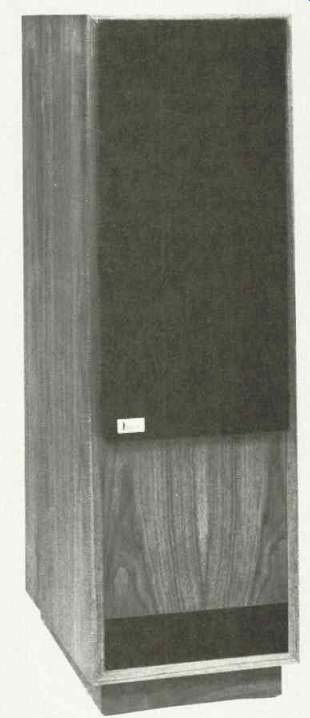
Manufacturer's Specifications
System Type: Floor-standing, two way, line-tunnel woofer enclosure.
Drivers: 8-in. (20.3-cm) woofer; 3/4-in. (1.9-cm) dome tweeter.
Crossover: 2.7 kHz, series "quasi second-order."
Frequency Response: 26 Hz to 22 kHz, ±3 dB.
Sensitivity: 90 dB SPL for 2.83 V at 1 meter.
Nominal Impedance: 8 ohms, resistive.
Recommended Amplifier Power: 20 to 200 watts.
Input Facilities: Five-way binding posts, 2-ampere fuse protection.
Dimensions: 39 in. H x 12 in. W x 18 in. D (99 cm x 30.5 cm x 45.7 cm).
Weight: 80 lbs. (36.3 kg).
Price: $1,150 per pair.
Company Address: 7616 City Line Ave., Philadelphia, Pa. 19151, USA.
The Fried Studio IV is a true audiophile speaker system. To the uninitiated, it may lack the bass "whump" and other attention-grabbing qualities that move masses of speakers from the appliance store to the living room. Instead, the purist who selects a pair of Irving M. (Bud) Fried's "monitors" enjoys a design approach in which warmth or air is considered distortion if it is not in the recording. Fried claims that there are many less-than-perfect recordings out there, and that speakers should reflect this; for instance, he says the reproduced sound of woodwinds miked too closely should be loud and screechy, just as it is "heard" by the microphone.
Bud Fried, a 40-year veteran of the speaker business, says that all of his speakers are designed primarily for reproduction of classical music, his favorite. He thinks it is the most challenging to reproduce. He feels that the Studio IV sounds excellent on rock or jazz as well, but that the speaker's finer points may go unnoticed in those uses. If the true, non-resonant bass seems light for rock or jazz, he says, a mild equalization boost down to 20 Hz is okay. If classical music seems lacking in bass when heard over the Studio IV loudspeakers, Fried suggests you attend a concert to calibrate your ears.
The price, $1,150 per pair, may seem a bit high, at first, for a two-way system using an 8-inch woofer and a 3/4-inch dome tweeter. Systems with drivers this size in bookshelf enclosures commonly go for $300 per pair (or less, if you luck into an appliance-store "Midnight Madness" sale). However, the value of the Studio IVs may become a bit more apparent when you consider the difference in quality, their engineering, and their large physical size.
This size is a result of the aperiodic (non-resonant) design philosophy. The "line tunnel" designation of the woofer enclosure is a bit misleading, because it is not the transmission-line design favored by Fried for his larger systems. It is simply a large, vented cabinet with foam damping panels inside and a flow resistance to control box-vent resonance.
The more common types of "Thiele-aligned" vented cabinet rely on driver damping alone to control this resonance; this results in the smallest possible size for a given low-frequency cutoff, but also produces, says Fried, ringing at the bass cutoff frequency. The line tunnel's more gradual cutoff is designed to eliminate the ringing, but the design pays for it in greater size for the same bass extension. The Studio IV's large cabinet also requires heavier panels and internal bracing to achieve adequate rigidity. All of this means higher manufacturing, shipping, and storage costs. Compared to some other limited-production systems, the Studio IVs offer both a name with a respected heritage of successful designs and a price that turns out to be downright reasonable.
The 39-inch-tall cabinet is finished in oiled walnut veneer and has slightly beveled edges to help control diffraction. The front of the adjustment screws for precisely aiming the speaker at the listening position.
The grille is a simple block of open-cell foam which sticks to six Velcro-style hook patches on the front panel. This grille doesn't match the quality of finish of the cabinet, and there is an adequate reason to leave it off: The woofer cone can strike the grille on forward excursions, as in high-level bass, causing a tick or buzz. With the grille off, you see a delicate soft-dome tweeter, the six Velcro patches, and the woofer's cone and stamped frame. All of my listening and measurements were made with the grille removed.
The Studio IVs come in mirror-image pairs with woofer and tweeter mounted near the inside edges. This encourages diffraction toward the center line between the speakers. Instructions state that the speakers are to be placed away from side and rear walls, to minimize reflections. Experiments with speaker locations and room acoustics are reported in more depth after the measurement results.
Measurements
The Studio IV's input impedance is plotted in Fig. 1. While not purely "resistive," as claimed in the specs, it is quite uniform above 100 Hz and never drops below 6.5 ohms in the audio band. The damped vent tunes the enclosure to 26 Hz, as shown by the slight dip near that frequency. In the more usual undamped vented design, this dip would descend to a very low value, such as 6 ohms. The maximum impedance phase angle, 45°, occurs at 66 Hz; complex impedance is shown in Fig. 2. The Studio IV should not present a difficult load, even to bridged amps rated at 8 ohms minimum.
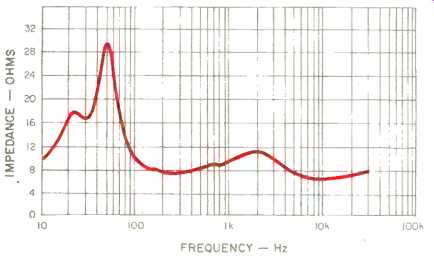
Fig. 1--Input impedance vs. frequency.
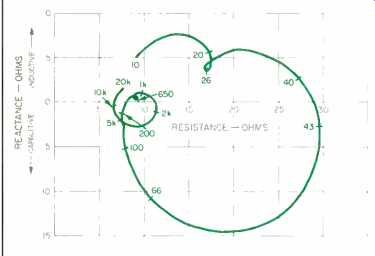
Fig. 2--Complex impedance. Maximum phase angle (45°) occurs at 66 Hz.

Fig. 3--Anechoic frequency response measured at 1 meter on axis.
Frequency response measurements of most speakers are very sensitive to the location of the measuring microphone.
When "on-axis" is called for, one must ask, "On the axis of what?" The manufacturer may want the axis of the tweeter, or the axis of the front panel's center, or, in the case of the Studio IVs, the axis of the woofer. Audio has a policy of using the axis normal to the front panel's geometric center, so as to ensure repeatability from speaker to speaker.
Figure 3 is a plot of frequency response on our standard measuring axis. Unequal path lengths to woofer and tweeter cause a cancellation just above the crossover frequency, at 3 kHz. The low-frequency portion of the plot shows the beneficial results of using a large, highly damped, tuned cabinet. Note that instead of the usual abrupt drop in output as frequency goes down, response falls only 6 dB in the octave between 60 and 30 Hz. Below 30 Hz, the response falls at 24 dB per octave, as is common in vented designs.
The most popular Thiele-aligned designs change suddenly, with decreasing frequency, from flat to 24-dB-per-octave roll-off. Sealed systems usually change rapidly from flat to 12-dB-per-octave roll-off.
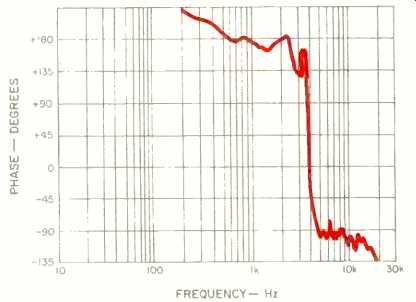
Fig. 4--One-meter, on-axis phase measurement.
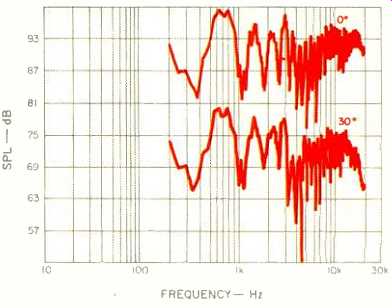
Fig. 5--Three-meter room-test plots, on axis (0°) and off axis (30°), including
initial wall, ceiling and floor reflections. Output (SPL) scale is for the
0° curve; 30° curve has been lowered by 18 dB for clarity.
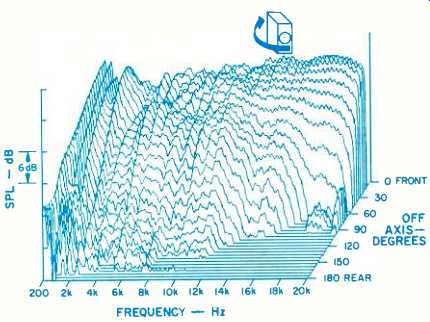
Fig. 6--Horizontal off-axis frequency response plots from front to rear of
system. No sharp directivity changes are exhibited in this two-way system.
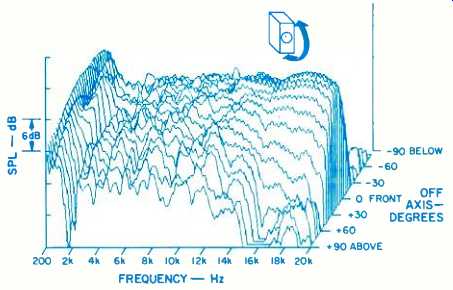
Fig. 7--Vertical off-axis frequency response plots from below to above system.
Considerable energy is radiated straight up.
Ringing on transients is the major audible effect of a fast transition from flat to a fast cutoff. Much fuss has been made about this same effect, at 20 kHz, in CD players that use steep anti-imaging filters. The audibility of ringing at a near-supersonic frequency is debatable, but low-frequency ringing in the range of 40 to 100 Hz is easily heard. In a woofer, this is audible as a timbre (the "whump" frequency) that accompanies or accentuates any low-frequency transient.
The Studio IV's low-frequency cutoff is rounded over more than an octave, so it is quite free from this effect. Don't expect to immediately hear a big difference. The removal of undesired low-frequency energy may make some people, ones more used to listening to speakers than live sound, ask, "Where's the bass?" Also, room resonances activated by poor speaker placement or acoustics may cause much more disturbance. In the best of all possible worlds, speakers would operate down to subsonic frequencies, in which case the cutoff-produced ringing would be subsonic. Until then, the Studio IV approach has merit.
System phase response is shown in Fig. 4. Although the amplitude response is flat, the phase response is not. How ever, it is my belief that this amount of phase shift is inaudible on music.
The 3-meter room test (Fig. 5) shows the effect of early reflections on the frequency response at my listening location. The 10-mS time window of the measurement includes only the first floor, ceiling, and wall reflections that would be typical of most rooms with the speakers placed as I had them. The carpeting on my floor is rather thin; with a more absorptive floor covering, the floor-bounce interference notch at 400 Hz would probably be less prominent.
Frequency plots taken every 6° from the front, around the side, to the rear of the speaker are shown in the three dimensional plot of Fig. 6. The measurements are made from 200 Hz to 20 kHz and are plotted on a linear frequency scale. Exceptionally wide directivity is seen through the entire range, a good reason to keep the Studio IVs away from walls and massive furniture. The commonly seen directivity change, from narrow to wide through the crossover range, does not exist for this two-way system. The Studio IV woofer uses a hollow pole-piece in its magnetic structure, so a porous dust cap is not required to relieve pressure. The rigid, inverted-dome cap attached directly to the voice-coil former of the woofer is claimed to act as a midrange radiator. This 2-inch cap could well be responsible for the excellent performance of this driver from 1 to 3 kHz.
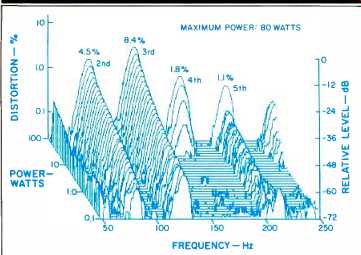
Fig. 8--Harmonic distortion products of the tone E1 (41.2 Hz).
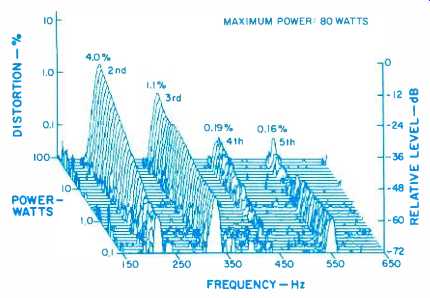
Fig. 9--Harmonic distortion products of the tone A2 (110 Hz).
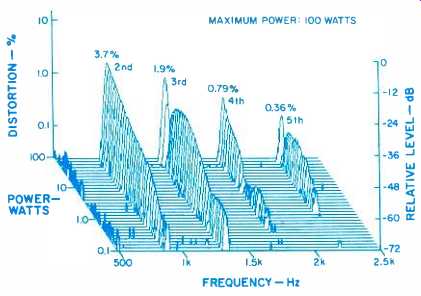
Fig. 10--Harmonic distortion products of the tone A4 (440 Hz) are acceptably
low.
I also made 31 plots vertically from below the speaker, up the front, to directly above it (Fig. 7). Wide-angle directivity is again shown, with considerable energy radiating straight up. So, one must be on the lookout for a floor-ceiling flutter echo (a hollow "room tone" excited by transients) when positioning these speakers. A vaulted ceiling is a nice way to handle this problem, but a thick rug or carpet under the speakers works well too. Close inspection of Fig. 7 reveals amplitude irregularities around the crossover frequency at angles above the geometric axis. It is wise to make use of the adjustable front feet to tilt the cabinet back, as recommended by Fried. Overall, the Studio IVs deliver a reason ably balanced direct-sound spectrum to any normal listening location. The only positioning requirement is to keep them away from surfaces that can produce early reflections.
Nonlinearity of the woofer was measured as harmonic distortion components for fundamental frequencies of 41.2, 110, and 440 Hz at power levels from 0.1 to 100 watts, where possible (Figs. 8, 9, and 10). For 41.2 and 110 Hz, a sharp buzzing began at about 80 watts, so testing was terminated at that power. The third-harmonic component was greater than the second in the 41.2-Hz measurement, but at 25 watts, fourth and fifth harmonics also began to rise.
The 8.4% maximum of the third harmonic at 80 watts is very respectable for an 8-inch driver of medium efficiency. At 110 and 440 Hz, second harmonic dominates, with maxi mums in the 4% range-again, very good performance.
Woofer nonlinearities were also measured by the intermodulation products method, using test signals of 440 and 41.2 Hz mixed in a 1:1 ratio (Fig. 11). This measurement gives an indication of how, in music, a midrange instrument (440 Hz) might be blurred by a bass instrument (41.2 Hz). At about 40 watts input, IM distortion rises to 10%, an annoying amount. While the harmonic components generated by 41.2 Hz at input powers above 40 watts may be acceptable, the effect of the IM on midrange instruments is not.
Power linearity is shown in Fig. 12. In this test, frequency response is first measured at 1.0 watt and stored in computer memory. Input to the speaker is increased, to measure additional responses at 10 and 100 watts. These measurements are then compared to the 1.0-watt response. A perfect speaker would simply be 10 and then 20 dB louder for all frequencies at the two higher powers. The computer plots the deviations at each frequency from the expected higher levels. The Studio IV performs very well at 10 watts over its entire frequency range. Clearly, 100 watts is over its capacity at frequencies below 50 Hz, but above that, mini mal compression is indicated.
The time response (Fig. 13) is measured at 1 meter on the axis of the woofer. The curve is compact and tall, indicating that all frequencies are radiated at nearly the same time and that internal resonances and reflections are minimal. I have found from experience that a good time response indicates a speaker's ability to reproduce a range of recorded ambience, from a dry nightclub to a spacious cathedral. Room or source-material defects can either flatten spaciousness or artificially create it, but a clean time response direct from the speaker indicates potential. Surprisingly, I am seldom aware of measured time dispersion being audible as a "time smear," even when listening to loudspeakers whose measurements are poor.
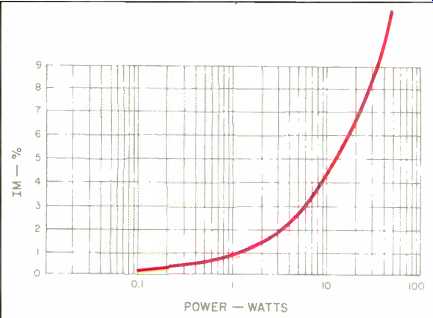
Fig. 11--IM distortion on A4 (440 Hz) caused by E1 (41.2 Hz), mixed 1:1.
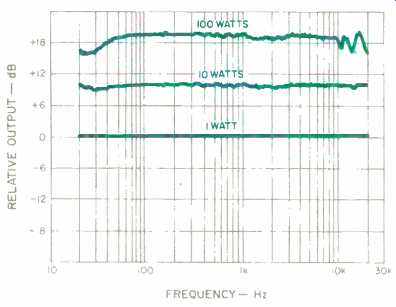
Fig. 12--Power linearity. Plot shows response at 10 and 100 watts relative
to 1.0 watt. Compression is evident at high power and at low frequencies.
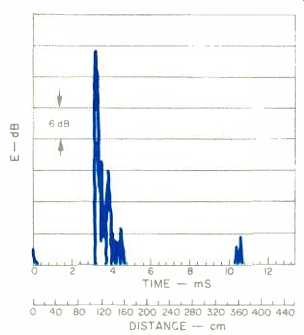
Fig. 13--Energy-time response.
Use and Listening Tests
My primary listening room is a dedicated facility, and is somewhat unusual in that its acoustics can be easily modified. Its size and shape were recommended in a study by the International Electrotechnical Commission (IEC) as appropriate to simulate an "average" living room. It is a rectangular room with dimensions of 18 by 25 by 10 feet. Shelves on all walls hold 2-foot-square, movable, acoustically absorbent blocks. Reflectors or absorbent panels can also be hung from a grid of attachment points on the ceiling. With a little work, the room can be made live, dead, in-between or live-end/dead-end. I generally leave it set for average acoustics but arrange the acoustical blocks to discourage flutter echoes.
The Studio IVs sounded best when placed only 6 feet apart along the short wall and angled inward slightly. This close spacing removed the "hole in the middle" encountered when listening slightly off the center line. Live lower-side walls smoothed out the sound and gave a sense of space. I preferred to listen well back, at about 12 to 14 feet; this necessitated deadening the rear wall to compensate for the live sides. The foam absorber on the floor midway to each speaker seemed to help, but the effect was subtle.
I found that the Studio IVs could also be used with their backs against the wall behind them without causing mid bass response irregularities. (When this was done I moved my listening position forward to maintain the same distance to the speaker.) I recommend sitting several feet away from a wall behind you or covering it with effective absorption such as Sonex foam or very heavy drapes. (All speakers have an optimum acoustic environment, but this interface is often ignored by home installers.)
Be prepared to rearrange your listening room if you buy these speakers. They radiate sound over a wide angle but, like most speakers, sound best when that radiation does not reflect off nearby objects or surfaces. The speakers should be kept at least 3 feet away from side walls, and heavily padded furniture or drapes along those walls should be avoided since they will absorb helpful delayed reflections. If the room is narrow, it is best to angle the speakers further inward to aim the sound away from the adjacent side wall and into the opposite one.
Although the acoustics were optimized for the Studio IVs, my three-way reference speakers were also used. One's ears often accept many speaker aberrations after a time.
Listening to a different speaker for a short time allows one to again be critical on returning to the original.
With the speakers placed as directed, the sound was analytically clear and up-front. On jazz and orchestral recordings, the Studio IVs delivered superb definition, ambience reproduction, and lateral and depth imaging (though the stage was a bit small). With a mild bass tilt-up (of the kind okayed by Mr. Fried), the sound was nicely balanced; without the tilt, it was a bit thin. Natural timbre and low coloration of voice and solo instruments were all excellent.
Bass was extended but a bit lean; the Studio IVs seemed to cleanly reach the lowest organ pedal notes, provided the volume was kept to a moderate level. Only in maximum undistorted output, particularly at low frequencies, were the reference speakers superior.
As I listened, I gradually began to prefer a reduced bass boost on the Studio IVs and I eventually lowered it to only +3 dB, below 100 Hz. With the speakers backed up against the wall, the balance was acceptable without any EQ. Play back level setting was found to be critical: If it was too high, the sound of massed voices or strings would become harsh and give a sense of pressure on the ears, like sonic glare.
Enjoyment of the Fried Studio IVs is a matter of expectations. If you seek easy listening, an always-lush string sound or high energy for rock, you might as well look elsewhere. If the goal is an analytical sound that is "musical" only when the recording and performance are first-rate, the Studio IVs can deliver superior detail and natural timbre.
--David L. Clark
(adapted from Audio magazine, Feb. 1986)
Also see:
Fuselier 3.8D Loudspeaker (Equip. Profile, June 1989)
= = = =